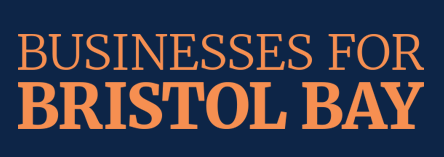New Study Updates Economic Importance of Bristol Bay, Underscores Urgency in Protecting the Region
New economic analysis of Bristol Bay’s famed salmon runs show that the fishery’s economic benefits exceeded $2.2 billion in 2019, generating more than 15,000 jobs while feeding hundreds of thousands of people. The commercial fishery supplies as much as 57% of the world’s sockeye salmon catch, driving $990 million in economic activity in Alaska alone, and $800 million in induced impacts for the Pacific Northwest.
The report titled “The Economic Benefits of the Bristol Bay Salmon Fishery” was produced by McKinley Research Group (formerly McDowell Group) and released by the Bristol Bay Defense Fund, a coalition working to protect Bristol Bay from the proposed Pebble Mine.
Overall, the numbers show that the world’s last great wild sockeye run is an economic powerhouse that must not be endangered by the proposed Pebble Mine, and comes as Tribes, commercial fishermen, sportsmen, conservationists and others have called on President Biden and the Environmental Protection Agency (EPA) to use the Clean Water Act to protect Bristol Bay.
"Salmon have sustained the people of Bristol Bay since time immemorial. This report begins to capture the enormous value our fishery contributes to the local, state and national economies, but salmon are so much more than just a source of money or food in Bristol Bay - they are our gold in every sense. It's time for the EPA to take action to ensure that this irreplaceable food source, economic engine and cultural resource are protected for future generations." - Alannah Hurley, Executive Director, United Tribes of Bristol Bay
Subsistence:
With more than 116,000 salmon and 503,000 pounds of salmon, 29 percent of the state’s subsistence harvest comes from Bristol Bay, sustaining Alaskans in more than 40 communities including many beyond Bristol Bay.
Replacing subsistence salmon with commercially purchased equivalent would likely cost upwards of $10 million, which does not account for the additional cultural and spiritual value of salmon.
This translates to about $4,500 to $9,000 in nutritional value to each participating household.
"Subsistence has afforded me all sorts of things. Being able to have my kids with me . . . I work from home and I’m a single mom. Without working for anyone else I’m able to do everything. It’s difficult quantifying it all into dollar figures, to nitpick and say ``what is it saving me." - Apay'uq Moore, Aleknagik, Alaska.
Commercial Fishing:
Most economic activity and value generated by the Bristol Bay salmon resource results from the summer commercial fishery, with Bristol Bay providing as much as 57% (2019) of the global sockeye production.
In total, Bristol Bay commercial sockeye fishery is valued at more than $2 billion, providing more than 15,000 jobs
Bristol Bay supports more than 8,500 harvesters, with 2000 from Bristol Bay, another 2500 from Alaska, and 4,000 from outside Alaska.
Bristol Bay supports more than 6,000 processors
"Bristol Bay’s fishermen and industry members have worked tirelessly over the past decade to sustainably harvest, process, and distribute an increasing share of the world’s wild salmon, all while fighting to preserve our greatest salmon nursery from the threats of the proposed Pebble Mine. This report highlights the successes and growth of our nation’s largest and longest lasting sustainable salmon fishery and underscores the urgent need to protect the fishery from the Pebble Mine.” - Katherine Carscallen, Commercial Fishermen for Bristol Bay.
Sport Fishing and Tourism:
Tourism in the Bristol Bay region produced more than 2,300 seasonal jobs in Alaska (annualized equivalent of 1,400) and $67.9 million in labor income in 2019.
More than 20,000 sportfishermen per year are estimated to have fished in Bristol Bay in the past five years.
Roughly 100 lodges and camps in Bristol Bay cater to tourists, with a primary focus on sportfishing and bear viewing.
An estimated 20,000 people participated in bear viewing during trips to Katmai National Park and Lake Clark National Park and Preserve in 2019. Total spending on these visitor trips is estimated at $20 million.
###
The Bristol Bay Defense Fund is a coalition of business, tribal, nonprofit, and community organizations dedicated to protecting Bristol Bay and its people from the growing threat of the Pebble Mine
